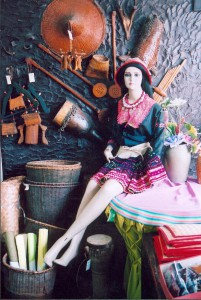Savage Minds welcomes guest blogger LINDSAY A BELL
In my first post, I proposed that anthropology might be particularly well suited to thinking through the concept of empathy. In North America, “empathy” has come to be a prominent term across the caring arts. In areas ranging from self-help to health care, empathy seems to be something that can and should be cultivated. In 2006, President Obama declared that an “empathy deficit” was more pressing than a federal budgetary deficit. The scale of this claim reflects an increasingly popular view of empathy as producer of solutions to large, complex issues. In his 2010 bestseller Empathic Civilization, American social theorist Jeremy Rifkin argued that “global empathic consciousness” could restore a global economy and solve climate change.
Last weeks’ commentators aptly pointed out that “empathy” has become a gloss for broader concerns. Its implementation from the perspective of those of you working with social workers, health care professionals and so on made it clear that institutionalized empathy is a downloading of problems onto already thinly stretched personnel. As a former pubic schoolteacher, I can agree that it is tempting to dismiss empathy as a smoke screen for troubles of our times. Yet, I keep coming back to anthropology’s shared principles with empathy—specifically perspective taking, withholding judgment, and dwelling with the people we work with. I am not arguing ‘for’ or ‘against’ empathy. Frankly, I am curious. What meanings has this term come to hold in the context of North America, and what very real kinds of ways of relating to Others has empathy been trying to capture but somehow can’t? Puzzled by the empathy boom, I went to a good friend for insights. As an analytic philosopher specializing in emotions and emotion history, she had a lot to teach me about the crooked conceptual path of the term. She was so generous in sharing what she knows, I thought I’d share what I’d learned here. Continue reading
